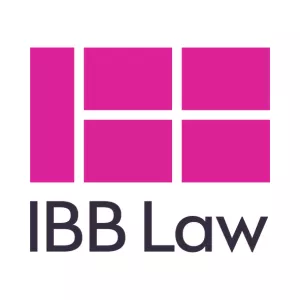- within Litigation and Mediation & Arbitration topic(s)
Under Section 130 of the Building Safety Act 2022, the High Court now has the right to make a Building Liability Order.
When used, a Building Liability Order extends the liabilities of one company (known as a body corporate) to its associated company/companies, making them jointly liable.
This prevents building companies from evading responsibility for producing unsafe buildings, by creating subsidiary companies or special purpose vehicles.
This blog will explain what Building Liability Orders are, why you may receive them and why it is important to have them.
The information given here is intended for general information purposes only and should not be taken as legal advice.
What are Building Liability Orders?
In the past, it's been common for property developers to use subsidiary companies or special purpose vehicles (SPV), often with few assets, to handle specific projects.
Once these projects are done, these subsidiaries are usually dissolved, making it difficult to hold them accountable for any issues. This means the main developer usually doesn't have to take long-term responsibility for these projects.
To tackle this problem, Building Liability Orders were introduced. These orders aim to stop developers from evading responsibility for safety problems using complex legal setups.
Under section 130 of the Building Safety Act, the High Court can issue a Building Liability Order if it's fair to do so. This order makes a liability of one company also a liability of another associated company. This means both companies could be held responsible for any issues.
So, if someone has a claim due to a liability, they can now pursue compensation from both companies involved. If they win, they can get compensation from either company.
Why were Building Liability Orders introduced?
Building Liability Orders were introduced to address the issue of accountability and responsibility in the construction industry, particularly concerning building safety.
Prior to their introduction, there were challenges in holding companies accountable for safety risks associated with developments, especially when special-purpose vehicles were used to prevent liability.
Building Liability Orders aim to ensure that those responsible for building safety issues can be held accountable.
What is a relevant liability?
A relevant liability means a liability arising under one of three conditions: the Defective Premises Act 1972, s. 38 of the Building Act 1984 or as a result of a building safety risk, meaning a risk to the safety of people in or about a building arising from the spread of fire or structural failure.
Under the Defective Premises Act 1972
The Building Safety Act widened the scope of the Defective Premises Act 1972. Originally a claim could only be made under the DPA if it related to the original construction of a building.
However, the Building Safety Act has now introduced a new section to the DPA which applies to any work done on an existing dwelling in the course of a business.
This duty is owed to both the person for whom the work is done, as well as to each person who has or acquires an interest in the building.
The limitation period for claims under the DPA has also been significantly extended.
Under Section 38 of the Building Act 1984
Section 38 of the Building Act 1984 provides a statutory right to claim compensation for physical damage (e.g. injury or property damage) resulting from a breach of Building Regulations.
The limited period for claims has also been extended to 15 years.
As a result of a "building safety risk"
The last "relevant liability," is outlined in the Building Safety Act as liability resulting from a building safety hazard.
According to the Building Safety Act, this refers to risks to people's safety within or near a building due to fire spread or structural failure.
This liability could apply to a range of situations and aims to support building safety, cladding, and fire safety claims following the Grenfell tragedy.
What are information orders?
Corporate structures can be complex often involving subsidiary companies or special purpose vehicles (SPV). In some cases, this means it can be difficult to ascertain who the owner is of a development.
The Building Safety Act now allows certain parties to get an information order which requires a specific company or its associated companies to provide the necessary information that a claimant may need when considering whether to make a Building Liability Order application.
The Act doesn't list the parties eligible to apply for an information order; this will be determined through secondary legislation. However, it's reasonable to expect that such parties will include those bringing claims related to relevant liabilities under the Defective Premises Act, the Building Act, and those concerning building safety risks.
What are associated body corporates?
Among other parties, a Building Liability Order or information order may be issued against the developer or their "associates." In this context, "associates" are defined as:
- A body corporate that controls, or is controlled by, the body corporate that carried out the works, such as a parent company, holding company, or subsidiary company.
- Two companies controlled by the same entity, such as sister companies.
- These provisions also extend to limited liability partnerships (LLPs).
Crucially, an associate can be subject to an order even if the original body corporate has been dissolved. Therefore, liabilities remain even after restructuring.
Before issuing an order, the court must determine if it is "just and equitable" to do so. The Act does not provide a specific definition for this test, so the extent of the court's discretion will likely be established through case law and applied on a case-by-case basis.
The content of this article is intended to provide a general guide to the subject matter. Specialist advice should be sought about your specific circumstances.


